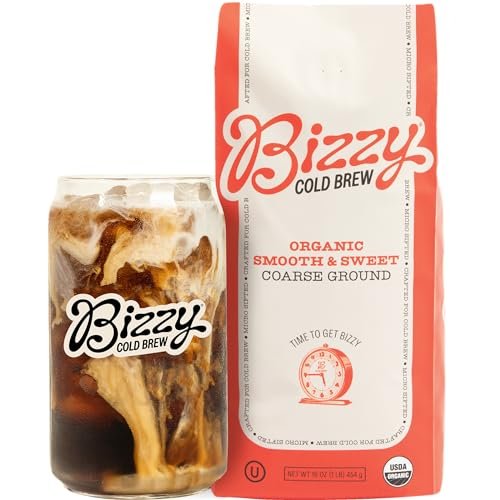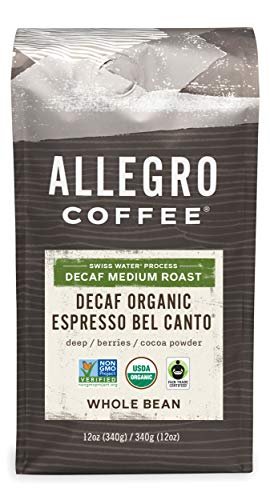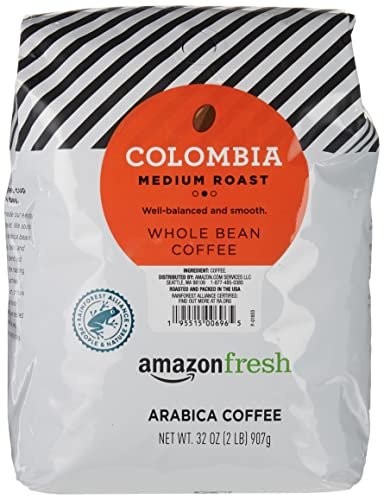Coffee lovers often seek the finest beans. Raw coffee beans offer a unique experience.
They hold the pure essence of coffee before roasting. In this blog, we explore raw coffee beans. Raw coffee beans are the foundation of every great coffee cup. They are green, unroasted seeds from the coffee cherry. These beans contain the potential for diverse flavors based on their origin and processing method.
By selecting raw beans, you control the roasting process, tailoring the taste to your preference. Understanding raw coffee beans is key to appreciating their versatility. They present an opportunity to experiment with various roast levels and brewing techniques. Dive into the world of raw coffee beans and discover the art of crafting your perfect cup.
Introduction To Raw Coffee Beans
Raw coffee beans are the seeds of the Coffea plant. They are green and unroasted. These beans are the foundation of all coffee drinks. Understanding raw coffee beans helps in appreciating your daily cup of coffee.
What Are Raw Coffee Beans?
Raw coffee beans, often called green coffee beans, are harvested coffee seeds. They are unroasted, which means they retain their natural green color. These beans are rich in chlorogenic acids, which have antioxidant properties. The roasting process alters the flavor and aroma of these beans.
Historical Significance
Coffee has a long history dating back to the 15th century. It is believed to have originated in Ethiopia. Coffee spread to the Arab world and then to Europe. By the 17th century, coffee houses were popular in many cities. Raw coffee beans were traded as valuable commodities. They played a role in social and economic development in many regions.
| Region | Historical Use |
|---|---|
| Ethiopia | Origin of coffee; used in traditional ceremonies. |
| Arab World | Introduced coffee cultivation; coffee houses became social hubs. |
| Europe | Popularized coffee houses; became a staple beverage. |
- Unroasted coffee beans are known as raw coffee beans.
- They are green in color.
- Rich in antioxidants.
Raw coffee beans have a significant historical importance. They were used in traditional ceremonies and were a key part of trade in many cultures.
Benefits Of Raw Coffee Beans
Raw coffee beans, often referred to as green coffee beans, are packed with numerous benefits. They are not just a trend, but a healthy addition to your diet. Let’s explore the benefits of raw coffee beans.
Enhanced Flavor Profile
Raw coffee beans offer a unique and enhanced flavor profile. The taste is more vibrant and less bitter than roasted beans. This makes them a favorite among coffee enthusiasts.
The natural flavors of raw coffee beans are more pronounced. This allows you to savor the original taste of the coffee plant. The beans’ freshness adds a crisp and clean note to your cup.
Health Advantages
Raw coffee beans provide several health advantages. They are rich in antioxidants which help in fighting free radicals in the body. This can reduce the risk of chronic diseases.
One of the key components is chlorogenic acid. This compound is known for its weight loss properties. It also helps in regulating blood sugar levels.
Here are some health benefits of raw coffee beans:
- Improved metabolism
- Enhanced energy levels
- Better mood and mental alertness
- Reduced risk of heart diseases
Additionally, raw coffee beans have lower caffeine content. This is beneficial for people who are sensitive to caffeine. It reduces the risk of caffeine-related side effects such as insomnia and jitteriness.
Comparison Table
Here is a comparison between raw coffee beans and roasted coffee beans:
| Feature | Raw Coffee Beans | Roasted Coffee Beans |
|---|---|---|
| Flavor | Natural and vibrant | Rich and bold |
| Antioxidants | High | Reduced |
| Caffeine Content | Lower | Higher |
| Chlorogenic Acid | High | Low |
Types Of Raw Coffee Beans
Raw coffee beans, often called green coffee beans, come in various types. Each type offers unique flavors and characteristics. Understanding these types helps coffee enthusiasts choose the perfect bean. This section explores the main types of raw coffee beans and their distinct features.
Arabica Vs Robusta
Arabica and Robusta are the two main types of coffee beans. Arabica beans are known for their smooth, rich flavor. They are often grown in higher altitudes. Robusta beans, on the other hand, have a stronger, more bitter taste. They are typically grown in lower altitudes and are easier to cultivate.
| Characteristics | Arabica | Robusta |
|---|---|---|
| Flavor | Sweet, fruity | Strong, bitter |
| Caffeine Content | Lower | Higher |
| Growing Altitude | High | Low |
| Shape | Oval | Round |
Arabica beans are preferred for specialty coffee. Robusta beans are commonly used in instant coffee and espresso blends due to their strong flavor.
Specialty Varieties
Beyond Arabica and Robusta, there are specialty varieties. These beans are often grown in specific regions and conditions. Some well-known specialty varieties include:
- Geisha: Known for its unique floral and jasmine-like aroma.
- Bourbon: Offers a balanced flavor with hints of chocolate and fruit.
- Typica: One of the oldest coffee varieties, known for its sweet and clean taste.
- SL28: Grown in Kenya, known for its bright acidity and fruity notes.
These specialty varieties require specific growing conditions and care. They often command a higher price due to their unique flavors and limited availability. Coffee connoisseurs seek out these beans for their distinct taste profiles.

Credit: itsdelish.com
Sourcing Raw Coffee Beans
Sourcing raw coffee beans is a crucial step for coffee enthusiasts. The quality of the beans greatly impacts the flavor and aroma of the final brew. Understanding where and how to source these beans can elevate your coffee experience. Below, we will discuss two vital aspects of sourcing raw coffee beans: finding quality suppliers and sustainable and ethical sourcing.
Finding Quality Suppliers
Quality suppliers ensure you receive the best raw coffee beans. They often have established relationships with coffee farmers. This direct connection helps maintain high standards. Look for suppliers with good reviews and certifications.
Specialty coffee shops can also be a good source. They often sell high-quality beans sourced from trusted farmers. Building a relationship with these shops can be beneficial. They can provide insights into the origins and quality of the beans.
Sustainable And Ethical Sourcing
Sustainable sourcing protects the environment and supports local communities. Ethical sourcing ensures fair wages and working conditions for farmers. Look for certifications like Fair Trade or Rainforest Alliance. These certifications guarantee that the sourcing practices are responsible.
Supporting sustainable and ethical sourcing helps the entire coffee supply chain. It ensures the longevity of coffee farming and promotes good practices. By choosing ethically sourced beans, you contribute to a better world while enjoying your coffee.
Storing Raw Coffee Beans
Proper storage of raw coffee beans is crucial. It ensures their freshness and flavor. When stored correctly, raw coffee beans can last for a long time. In this section, we will cover the best practices for storing raw coffee beans. We’ll discuss optimal storage conditions and the shelf life of raw coffee beans.
Optimal Storage Conditions
To keep raw coffee beans fresh, store them in a cool, dark place. The ideal temperature is between 60-70°F (15-21°C). Keep them away from direct sunlight. Avoid areas with high humidity. Moisture can cause mold growth.
Use airtight containers for storage. Glass or ceramic containers with tight lids work best. Avoid using plastic bags. Plastic can allow air and moisture to seep in. Make sure the container is clean and dry before storing the beans.
Shelf Life Considerations
Raw coffee beans have a long shelf life. When stored properly, they can last up to 12 months. Some experts say they can last even longer. Over time, the beans may lose some of their flavor. To maintain the best quality, use them within a year.
Check the beans regularly for any signs of spoilage. Look for mold or off smells. If you notice anything unusual, discard the beans. Proper storage can help prevent spoilage and extend the shelf life of your raw coffee beans.
| Storage Method | Recommended Conditions | Expected Shelf Life |
|---|---|---|
| Glass/Ceramic Container | Cool, Dark, Dry | Up to 12 Months |
| Plastic Bag | Cool, Dark, Dry (Less Ideal) | Less than 12 Months |
By following these storage tips, you can ensure your raw coffee beans stay fresh and flavorful for as long as possible. Enjoy your coffee with confidence!

Credit: www.hotelmariahilf.at
Roasting Raw Coffee Beans
Roasting raw coffee beans is an art that transforms green beans into aromatic coffee. The process is crucial for developing the flavor and aroma that coffee lovers appreciate. Whether you are roasting at home or using professional methods, the key is to bring out the best in the beans.
Home Roasting Techniques
Roasting coffee at home is a rewarding experience. It allows you to enjoy fresh coffee and explore different roasting profiles. Here are some popular techniques:
- Oven Roasting: Preheat your oven to 450°F (232°C). Spread beans on a baking sheet. Stir every few minutes. Roast for 15-20 minutes. Listen for the first crack.
- Stovetop Roasting: Use a heavy skillet or pan. Heat it over medium heat. Add beans and stir constantly. Listen for the first crack. Remove from heat after 10-15 minutes.
- Popcorn Popper: Use an air popcorn popper. Add beans and turn it on. Stir occasionally. Listen for the first crack. Takes about 5-7 minutes.
Professional Roasting Methods
Professional roasters use advanced equipment and techniques to achieve consistent results. These methods bring out the complex flavors in coffee beans. Here are some common methods:
| Method | Description |
|---|---|
| Drum Roasting | Uses a rotating drum. Beans are heated evenly. Allows precise temperature control. Common in commercial roasting. |
| Fluid Bed Roasting | Uses hot air to roast beans. Beans are suspended in air. Provides even roasting. Results in a clean, bright flavor. |
| Hybrid Roasting | Combines drum and fluid bed methods. Offers precise control and even roasting. Popular in specialty coffee shops. |
Choosing the right method depends on your goals and resources. Both home and professional roasting can produce excellent coffee when done correctly. Experimenting with different techniques can help you find your perfect roast.
Grinding And Brewing
Grinding and brewing raw coffee beans play a crucial role in coffee making. The right grind and brewing method can enhance the flavor of your coffee. This section will guide you through choosing the right grind and various brewing methods.
Choosing The Right Grind
Grinding coffee beans is the first step in brewing. The grind size affects the flavor and strength of your coffee. Here are common grind sizes:
- Coarse Grind: Suitable for French press and cold brew.
- Medium Grind: Ideal for drip coffee makers and pour-over.
- Fine Grind: Best for espresso machines and Aeropress.
Choosing the right grind size ensures optimal extraction. Experiment with different sizes to find your preferred flavor.
Brewing Methods
Different brewing methods bring out unique flavors in coffee. Here are popular methods:
| Method | Description | Recommended Grind Size |
|---|---|---|
| French Press | Steeping method using a plunger. | Coarse |
| Drip Coffee Maker | Gravity-based brewing with filters. | Medium |
| Espresso Machine | High pressure extraction. | Fine |
| Aeropress | Quick, manual brewing. | Fine |
Each brewing method offers a different experience. Choose one that suits your taste and lifestyle.

Credit: www.haymancoffee.com
Tasting And Enjoying
Raw coffee beans offer a unique tasting experience. They bring a world of flavors waiting to be explored. Understanding these flavors can elevate your coffee enjoyment to new heights. Let’s delve into the exciting world of tasting and enjoying raw coffee beans.
Flavor Notes And Profiles
Raw coffee beans have distinct flavor notes. These notes range from fruity and floral to nutty and earthy. Each variety of raw coffee bean has its own unique profile.
Some beans might have citrus undertones. Others might carry hints of chocolate or spices. The origin of the beans often influences these flavors. For example, African beans might be more fruity. South American beans might have more chocolatey notes.
Roasting also impacts flavor. Light roasts preserve more of the bean’s original flavors. Dark roasts bring out deeper, richer notes. Experiment with different roasts to find your perfect flavor profile.
Pairing With Food
Pairing raw coffee beans with food can enhance your tasting experience. Certain foods complement specific coffee flavors. For instance, fruity coffee pairs well with sweet pastries. Chocolatey coffee goes well with desserts like brownies or cakes.
Nutty coffee beans can be paired with savory dishes. Think about pairing them with cheese or nuts. Earthy beans complement hearty meals. Try them with dishes like roasted meats or vegetables.
Experiment with different combinations. This can help you discover new and delightful pairings. Enjoy the process of finding the perfect match for your coffee and food.
Frequently Asked Questions
What Are Raw Coffee Beans?
Raw coffee beans are unroasted seeds of the Coffea plant. They retain their natural flavors. These beans are green and hard.
How To Store Raw Coffee Beans?
Store raw coffee beans in a cool, dark place. Use airtight containers to maintain freshness. Avoid moisture and direct sunlight.
Can You Roast Raw Coffee Beans At Home?
Yes, you can roast raw coffee beans at home. Use a home roaster or pan. Monitor temperature closely.
What Is The Shelf Life Of Raw Coffee Beans?
Raw coffee beans can last up to 12 months. Proper storage is key. Keep them in cool, dry conditions.
Conclusion
Raw coffee beans offer a unique experience for coffee lovers. Their natural flavors and rich aromas are worth exploring. Experimenting with them can lead to discovering new tastes. They also provide health benefits like antioxidants and vitamins. Sourcing quality beans is crucial for a good brew.
Consider trying raw coffee beans to enhance your coffee journey. Enjoy the process of roasting and brewing at home. It adds a personal touch to your daily cup. Explore, taste, and appreciate the world of raw coffee beans. Your palate will thank you.





